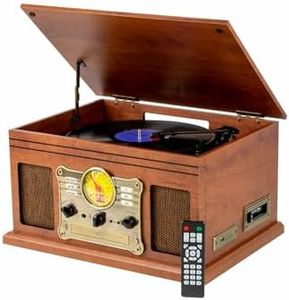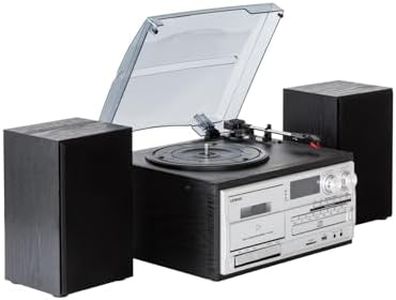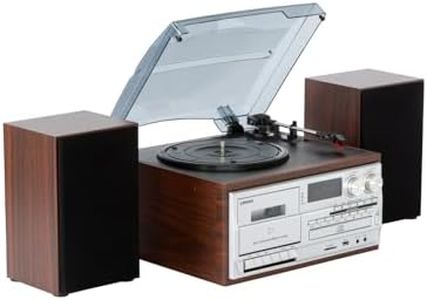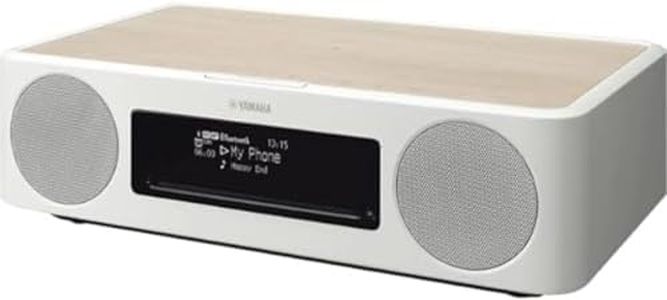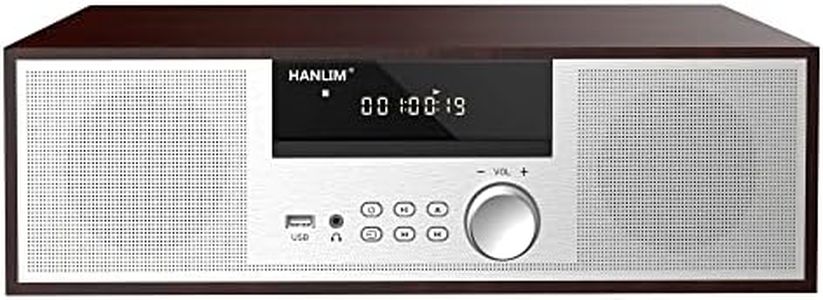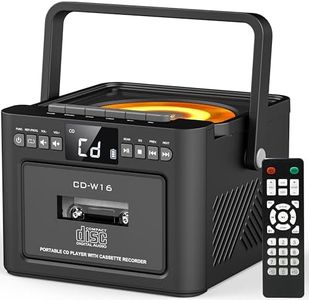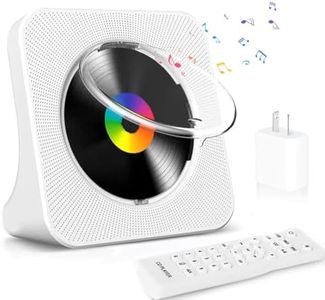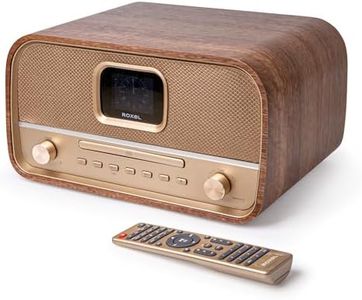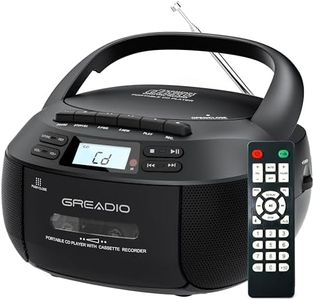We Use CookiesWe use cookies to enhance the security, performance,
functionality and for analytical and promotional activities. By continuing to browse this site you
are agreeing to our privacy policy
10 Best Multi Cd Players
From leading brands and best sellers available on the web.Buying Guide for the Best Multi Cd Players
When shopping for a multi-CD player, it's best to start by understanding how and where you'll use it—are you outfitting a home stereo system, a sound setup for events, or looking for something for background music in a public space? Multi-CD players allow you to enjoy hours of uninterrupted music or audio without constantly swapping discs, which can be a real convenience for music lovers with large CD collections. To find the best fit, pay close attention to key specs related to capacity, playback options, audio connections, and user interface. Knowing which features matter most for your listening habits will help you make a satisfying investment.CD CapacityCD capacity tells you how many CDs the player can hold and play in one session without swapping. This spec is central because it directly affects how much music you can enjoy in one go. Basic models usually hold 3-5 discs, which works well for people who only want a bit of variety without reshuffling. Larger players can hold 25, 50, or even 100 CDs, turning your player into a jukebox and minimizing interruptions—ideal for parties, businesses, or anyone who doesn't want to fuss with discs often. Choose your capacity based on the size of your CD collection and how often you want to switch things up.
Playback ModesPlayback modes describe how the player can sequence, repeat, or shuffle tracks and discs. Simple models might only offer basic play, repeat, and shuffle on a single CD, while more advanced units let you shuffle across all loaded discs, program playlists, or even skip certain discs or tracks. If you enjoy continuous, random background music or want to avoid hearing the same order, advanced playback modes are valuable. Consider whether you want to control the listening flow or just let the device surprise you.
Audio Output OptionsAudio output options determine how you connect the player to speakers, amplifiers, or other sound systems. Common outputs include analog RCA (standard for most home systems), digital optical or coaxial for higher-quality or more modern setups, and sometimes even headphone jacks for dedicated listening. If you're using an older stereo, standard outputs suffice. For connecting to newer home theater systems or professional equipment, digital outputs can provide better audio clarity. Think about the gear you already have and match outputs to make setup easy.
Loading MechanismThe loading mechanism refers to how CDs are inserted and swapped in the player. Carousel or changer trays rotate to access multiple discs, while magazine or cartridge systems let you pre-load discs into a removable case. Carousel changers are common and easy to use for those who swap discs frequently. Magazine systems hold more discs and are convenient for large music libraries, but swapping out the whole magazine can be more effort. Consider what feels more user-friendly for your typical usage—quick swaps for everyday listening, or set-and-forget for long playlists.
Display and ControlsThe display and controls affect your ability to easily select discs, tracks, and adjust settings. Larger and clearer displays make it easier to browse your collection, see track information, or check play order. Remote controls offer added convenience, especially in larger spaces or home setups. If you value simplicity and accessibility, look for intuitive layouts and easy-to-read screens. More advanced users might prioritize touch controls, track programming, or remote operation for flexibility.
CompatibilityCompatibility indicates which disc formats the player can handle, such as standard audio CDs, CD-Rs, CD-RWs, or even MP3 CDs. If you have custom-burned discs or want to enjoy longer playtime with compressed files on MP3 CDs, make sure your player supports these. Some models are strict about only reading original CDs, so review the compatibility if you rely on homemade compilations or different audio formats. Align your choice with the type of discs in your collection.
